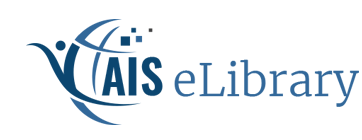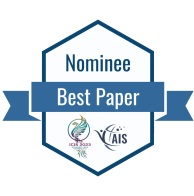Loading...
Paper Number
1201
Paper Type
short
Description
The looming AI Act puts significant pressure on organizations to develop safe and reliable AI. First, we analyze 975 AI incidents to provide an overview of the actors involved in identifying primary AI failures. Second, using institutional theory and based on over two years of observation of more than 400 actors, we identify four strategies (circumvent, comply, compromise, and control) and exemplary response practices (relabel, redefine, balance, and predefine) for how firms respond to institutional pressures from AI regulation. We thereby extend the institutional theory perspective on AI regulation. Using our longitudinal multi-actor perspective, we develop the 4C-Framework for how organizations actively respond to AI regulation. Moreover, we demonstrate how this framework can be applied to impending AI regulation, including strategies for engaging with regulators, exploring opportunities for collaboration, and dealing with the spread of misinformation. Overall, this paper provides a comprehensive approach for companies to proactively shape AI regulation.
Recommended Citation
Kahdan, Manoj; Hartwich, Nicole Janine; Salge, Oliver; and Cichy, Patrick, "Navigating Uncertain Waters: How Organizations Respond to Institutional Pressure in Times of the Looming EU AI Act" (2023). ICIS 2023 Proceedings. 12.
https://aisel.aisnet.org/icis2023/gov_strategy/gov_strategy/12
Navigating Uncertain Waters: How Organizations Respond to Institutional Pressure in Times of the Looming EU AI Act
The looming AI Act puts significant pressure on organizations to develop safe and reliable AI. First, we analyze 975 AI incidents to provide an overview of the actors involved in identifying primary AI failures. Second, using institutional theory and based on over two years of observation of more than 400 actors, we identify four strategies (circumvent, comply, compromise, and control) and exemplary response practices (relabel, redefine, balance, and predefine) for how firms respond to institutional pressures from AI regulation. We thereby extend the institutional theory perspective on AI regulation. Using our longitudinal multi-actor perspective, we develop the 4C-Framework for how organizations actively respond to AI regulation. Moreover, we demonstrate how this framework can be applied to impending AI regulation, including strategies for engaging with regulators, exploring opportunities for collaboration, and dealing with the spread of misinformation. Overall, this paper provides a comprehensive approach for companies to proactively shape AI regulation.
When commenting on articles, please be friendly, welcoming, respectful and abide by the AIS eLibrary Discussion Thread Code of Conduct posted here.




Comments
18-Govern